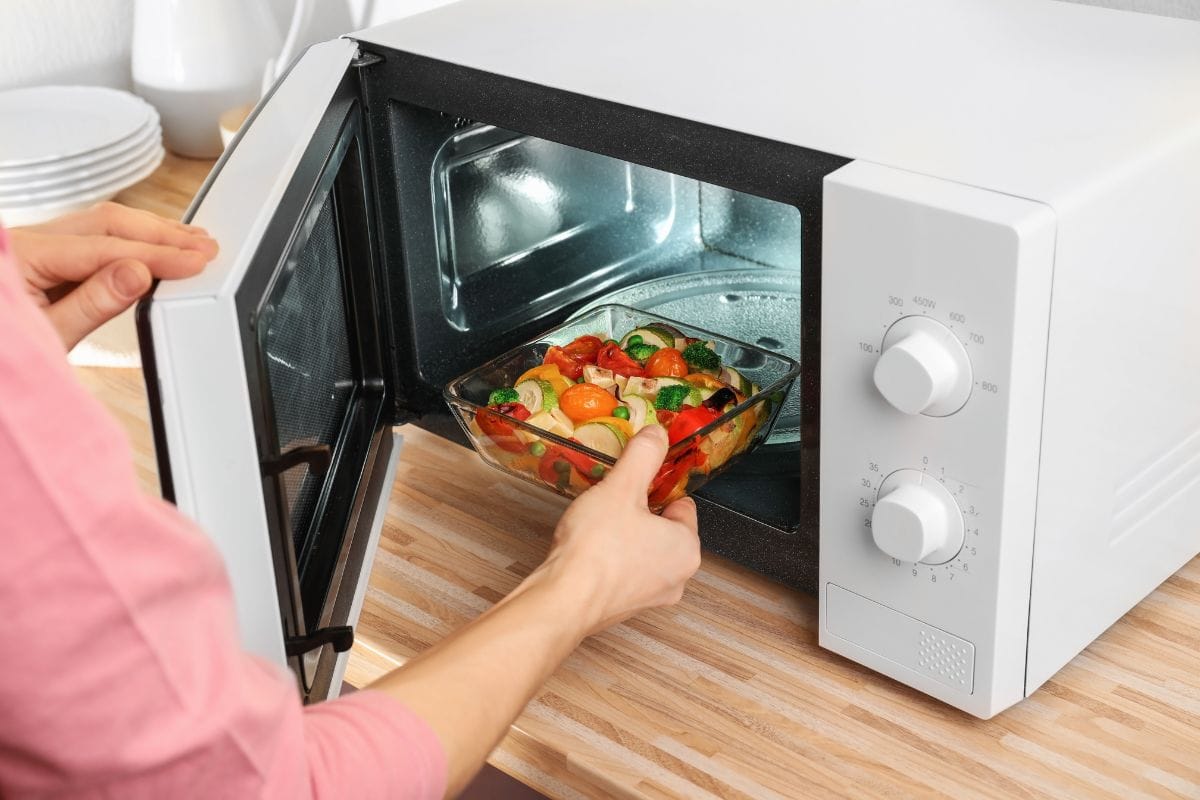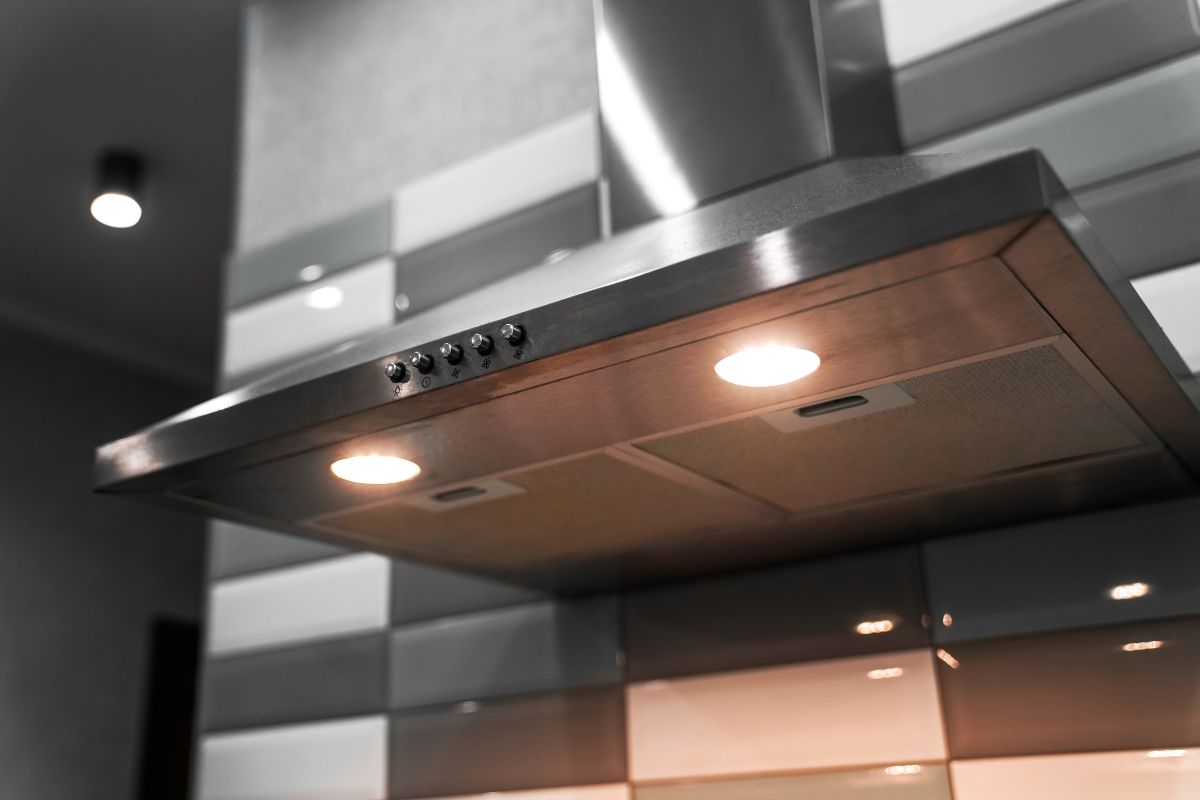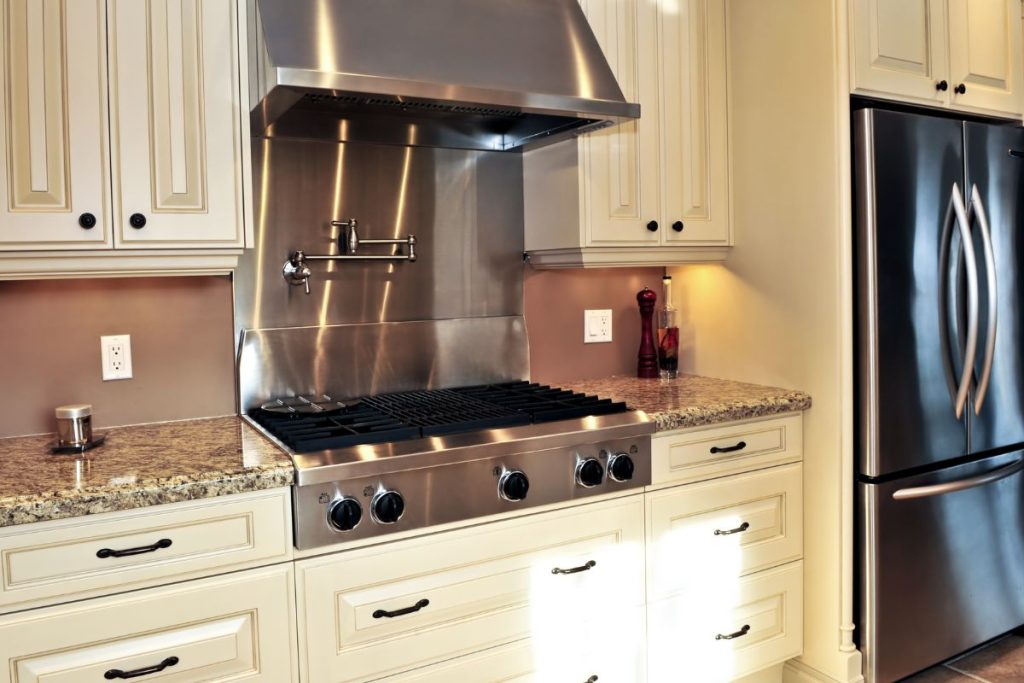- Ventilation through the window
- Tapping into an existing ventilation system
This time, we'll figure out how to vent a microwave outside. We'll provide the complete steps you can follow. There's a lot we could learn. So, join us in reading!
![Interior of modern luxury kitchen with stainless steel appliances. - How To Vent Microwave Outside [Step By Step Guide]](https://hvacseer.com/wp-content/uploads/2022/11/Interior-of-modern-luxury-kitchen-with-stainless-steel-appliances.-How-To-Vent-Microwave-Outside-Step-By-Step-Guide-1.png)
How to Vent a Microwave Outside [Step-by-Step Guide]
A microwave releases a lot of heat energy during its operation. That's why installing a vent redirecting the hot air outside is essential. See below some options for venting it.

1. Ventilation Through the Window
Yes, you can ventilate through a window by adding an exhaust fan and converting the window into an air exit. It's easier to do since most kitchens already have a window.
So, see below the general steps on how to install an exhaust fan:
- Measure the window and find the exact size of the exhaust fan.
- Drill some holes for mounting the fan.
- Screw the fan around the window's edges.
- Mount and install the exhaust fan. Refer also to the product guide.
- Proceed to wiring the fan, then turn it on.
2. Tapping an Existing Ventilation System
It's convenient to tap into an existing ventilation system to connect it to the microwave. Doing so can save time from installing a new vent. Refer to the steps below:
- Inspect the microwave unit and assess its condition. Before proceeding to vent, you will want to fix any damage, such as wiring issues or broken components.
- Measure and mark the vent size for cutting. Drill the hole to fit in the ventilation duct. Insert the ventilation duct into the hole, then stretch it until it reaches the central ventilation system or the open space outside the house.
- You'll want to cover it with a metallic grill to filter out solid dirt coming from the outside. Attach the hood vent above the microwave unit at the other end of the ventilation duct.
- If the unit is inside a cabinet, you can make a hole in the cabinet to connect the duct or opt to relocate the unit anywhere in the kitchen.
- Secure the hood vent with the clamps provided in the package. You can also use duct tape and sealant, depending on what type of hood vent you have.
Below, you can see how to install a microwave with over-the-range-style hood ventilation that taps into an existing duct system:
Where Should the Ventilation Duct Run Through?

You have two options: to run the ventilation duct through the wall or the roof. But for a kitchen, venting through the top is more common. The only difference is that a roof vent comes with a cap to prevent rainwater from entering.
Also, the wall vent can cause discoloration on the exterior wall paint simply because the smoke may have darkened its surface. Unlike in roof vents, the smoke isn't strong enough to cause discoloration on metal roof sheets.
Why Vent a Microwave Outside?
What Is a Recirculating Vent?
In ventilation, recirculation refers to the continuous air flow in a single place. Recirculation in the microwave occurs when the vent sucks and filters the air, then releases it back into the kitchen area.
Recirculating vents don't need ducts to redirect the air. However, this is possible only on some types of vents that have a recirculating feature. It's usually composed of a built-in exhaust fan and is more expensive than traditional ventilation ducts.
Does the Microwave Range Hood Vent Outside?

A microwave installed above the range could be vented either by recirculating air or directly outside via pre-installed ductwork.
It's essential to read the model specifications to ensure the microwave and range have adequate ventilation in this set-up. Ventilating outside can best be done using a microwave with a vent hood combination.
Where to Place the Microwave?
It's essential to be aware of the best locations for a microwave. Also, simply because we're discussing outside ventilation doesn't mean a microwave should be placed outside, as it could get damaged when exposed to the elements.
However, see below some locations where to put your microwave.
Away from Window
Although we mentioned that you can vent the microwave through a window, you should give sufficient space between the window and the microwave. Otherwise, placing it too near the window can be a problem when it rains. The rainwater might come inside the unit and trigger an electric shock.
Away from Refrigerator
A microwave and refrigerator quite contradict in purpose. You don't want to put them near each other, as the fridge may absorb the heat from the microwave and cause the food inside to get spoiled. Consider giving space between them for efficient function.
On the Countertop
Commonly, homeowners prefer putting the microwave on the countertop. You can do so, considering there's at least a distance of 4-9 feet from the sink. The kitchen sink, especially aluminum, is sensitive to heat and can show dents when the microwave is on.
What Are Microwaves with Built-in Vents?
If you're looking for a microwave product with a built-in ventilation system, there are a lot of manufacturers. These microwaves can save space by combining the unit with a small vent on its top portion. As a result, you don't have to worry about installing a ventilation duct to vent the air outside.
Expect the price from $348 to $500 depending on the brand, product model, and manufacturer.
What Could Happen to an Unvented Microwave?
The first thing that might cross your mind is overheating the unit, which is valid due to the heat that cannot escape the area properly. An unvented area will have increased air pressure, causing harm to its surroundings. You can read more below on what could happen if you don't use a microwave.
Wear Out Quickly
Of course, the unit will wear out too early. An unvented microwave will overwork, unable to withstand the heat and vapor that are supposed to be venting away every after use. You might notice the microwave's metallic surface rusting due to the stream that accumulates on it.
Use Energy Inefficiently
An unvented microwave will lead to inefficient use of electricity. The food you reheat or bake might turn out poorly. Thus, the taste may become unsatisfying.
Aside from cooking issues, the microwave could waste energy. It will keep consuming electricity and have difficulty reaching the temperature you set. That's why ventilation is necessary to conserve energy instead.
How to Tell the Microwave Is Overheating?

It's hard to tell when a microwave is overheating, especially if you're not paying attention. Overheating happens when the temperature gets too hot, and the unit cannot vent itself to cool quickly.
If you left the microwave on, installing a smoke detector in your kitchen is the fastest way to notice it.
See this smoke detector on Amazon.
See below some signs a microwave is overheating for your awareness:
Visible Smoke
An obvious sign is when you see smoke. It can be dark or grey, depending on the temperature. Should this happen, quickly unplug the microwave and let it cool down.
Burning Smell
This is not an easy sign; you might smell the food burning and confuse it with an overheating microwave. You'll want to check the food inside to see if the smell comes from it. Otherwise, there might be wires corroding to the hot temperature.
Conclusion

We've learned how to vent a microwave outside and that the vent can come through the walls or above the roof. Keep in mind that ventilation is essential for kitchen safety.
Are you ready to learn more related topics? Visit us here:

